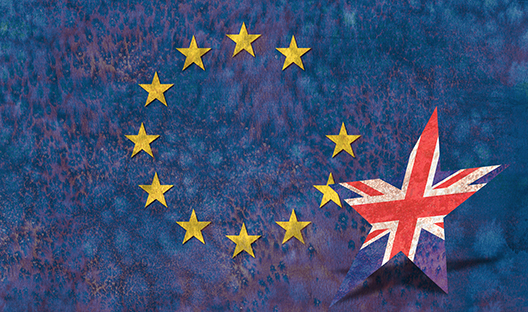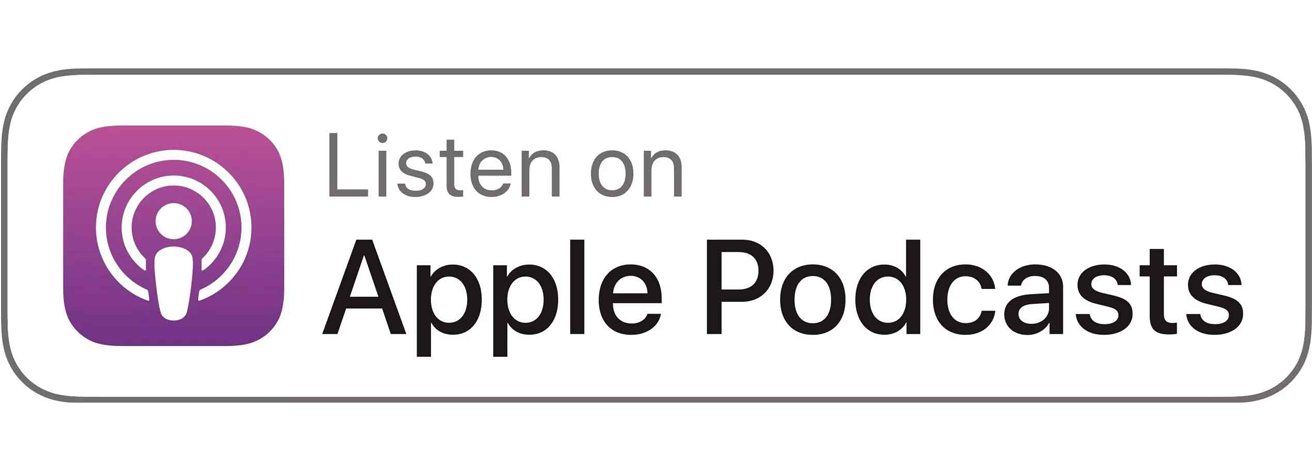
Economic Q&A replay: the economy, markets, currency, retail and property in 2021
2020 has been a year to remember. The coronavirus pandemic, Donald Trump being voted out as US president and elongated Brexit discussions are just some of the events that have dictated sentiment and will continue to do so into the new year.
In our latest webinar, Investec economist Philip Shaw was joined by experts across the business to give their 2021 outlook for the economy, markets, currencies, retail and property.
Watch the full replay below or read the summary here:
Prefer to listen to the audio?
Download the podcast and listen on the go.
Alternatively, use the links below to play the episode wherever you get your podcasts.
Listen to the episode on Investec Focus Radio UK wherever you get your podcasts
If you don't receive invites already, please sign up here to receive invitations for upcoming webinars
What does 2021 hold for the UK economy?
As the world gradually recovers from the Covid-19 pandemic, Investec experts examined the outlook for 2021 in our latest economics webinar. Against a challenging backdrop and the risk of further turbulence ahead, they discussed how a post-Covid world could bring disruption but also opportunities in equities, currencies, retail and property.
Economic milestones and key questions

Despite the number of Covid-19 cases rising and restrictions being reinforced, Investec chief economist Philip Shaw was confident the rollout of multiple Covid-19 vaccines should allow for a relaxation in social distancing in the first half of the year, which will benefit the UK economy.
With the economy expected to have contracted by 11% in 2020, next year should see it grow by about 7.6%. “The risk is next year’s upturn is not quite as strong, but it will happen,” said Shaw.
Brexit was the other word on everyone’s lips. With time running out, Shaw still expects some form of deal to be agreed. “Staring down the barrel of a gun helps,” he said, referencing the propensity for eleventh-hour deals in trade negotiations.
But even if a deal can be approved before the end of the year, Shaw warns that the time it would take to formalise and translate into official EU languages will continue to cause chaos at the ports for several weeks. He also notes: “People have lost sight of this, but even with a deal there will be more friction – for example, customs forms to be filled out. Hence, the government is urging businesses to prepare.”
More than a year after the general election that saw Boris Johnson win the largest parliamentary majority since Margaret Thatcher in 1987, there is speculation around the prime minister’s departure in 2021. While this remains impossible to tell, Shaw said local and parliamentary elections for Wales and Scotland could have a major impact on the political tone in 2021. If the Scottish National Party regains a majority in Holyrood, another Scottish independence referendum will be on the agenda, with recent polls suggesting a small majority in favour of leaving the UK.
Shaw also highlighted the election of Angela Merkel’s successor in Germany as key for the global economy, due to Germany’s influence in the Eurozone. Meanwhile, a Biden administration in the US should ease global trade tensions and barriers. However, Biden’s ability to alleviate fears of a slowdown – by pushing through a substantial fiscal support package – hinges on gaining control of the Senate. The outcome of the two runoffs in Georgia are expected to be very close and will play a significant role in shaping 2021 from an economic perspective, said Shaw.
The economy could not have survived the year without tremendous monetary and fiscal support from governments and central banks. But Shaw believed with the recovery in sight, the Bank of England will not need to deploy negative interest rates. “While the European Central Bank insists negative rates have been a success, there is a level beyond which they do more harm than good,” said Shaw.
He was also sceptical a wealth tax will be introduced to cover the increase in UK government spending due to the pandemic, but notes a rise in capital gains tax can be expected in the next Budget.
Equity markets are two steps ahead
Head of Investment Strategy John Wyn-Evans believed the government programmes, central bank support, quantitative easing and strong demand for assets that have maintained liquidity throughout 2020 will continue to do so next year. Meanwhile, weak economic data, rising unemployment and retail administrations will worsen as Covid-19 cases rise this winter.
But the market is looking ahead to where we will be in the next six to nine months. With vaccines inoculating the population, herd immunity will gradually take hold. Economic growth will start to come through and the companies that survived 2020 should see positive earnings return.
Wyn-Evans said that we will have other things to worry about in 2021, such as a possible return of inflation. However, Wyn-Evans was relieved the “BVB” trade – Biden, Vaccine, Brexit – that dominated 2020 will be behind us in 2021. In addition, an enormous amount of savings in the private sector could be unleashed as normality returns.
A key difference next year will be the shape of the market, noted Wyn-Evans. This may be driven by cyclical shorter-duration stocks instead of the long-duration growth defensives that have led for so long.
“Crucially, our core investment philosophy to buy growth compounders for the long term still holds,” said Wyn-Evans. However, it requires a leap of faith, he explained, to think about how companies can grow over a five to ten-year horizon.
A key difference next year will be the shape of the market. This may be driven by cyclical shorter-duration stocks instead of the long-duration growth defensives that have led for so long.
Which currency will win out?
Jonathan Pryor, head of Corporate FX, outlined the three key themes that dominated currency markets in 2020 – sterling weakness, euro strength and the existential threat to the dollar.
Deteriorating fundamentals left investors struggling with reasons to hold the pound. Underpinned by Brexit uncertainty, sterling weakness led to a largescale reallocation and unwound every rally, while the euro benefitted from the continent’s handling of the pandemic and generous recovery package. Meanwhile, the dollar suffered at the hands of Donald Trump’s mishandling of the health crisis and uncertainty around fiscal support in the US.
Looking ahead, investors will need to ask themselves three key questions. First, can sterling recover? “Don’t be fooled by sterling/dollar at 1.35. Sterling is not strong – it is the dollar that has weakened,” said Pryor. The impact of Covid-19 and Brexit on sterling fundamentals have relegated it to a risk-off currency – at the back of the queue for investors to buy or hold.
However, Pryor believes the stars may align for sterling in the second half of next year. The Covid-19 situation will improve, Brexit risk will dissipate and market sentiment will improve. He expects asset flows to ease up, if not turn around, and for the pound to close 2021 at about $1.40. The real test will come from the resolution to the Brexit saga. If there is no deal, this could be the knockout blow for sterling. Another risk will come from the UK’s economic recovery in the first weeks of 2021. If growth keeps slowing, the possibility that the Bank of England would cut interest rates below zero would be another hit to the pound.
Second, Pryor questioned whether the euro can maintain its strong performance of the last five years, as investors diversified away from the dollar. He hinted at the fact the ECB is not comfortable with a stronger euro, with European economies relying on exports to the US. “The euro is a cautionary tale for investors. It has benefitted from what has gone on elsewhere, but with stretched balance sheets, we are not suggesting it will win the yield battle.”
Finally, what is the alternative to dollar supremacy? The political and economic flaws Covid-19 has exposed in the US will not unravel in 2021. However, Pryor does not foresee a complete shift in global currency markets just yet. China, he notes, still has some way to go in terms of availability of currency. The dollar will not debase, but Pryor believes we could see sustained weakness. More broadly, the market will refocus on yield and currency fundamentals, notably how different economies will fare post-Covid and the impact of key political events.
The retail revolution lives on

Covid-19 was the ultimate survival test for the retail sector. Kate Calvert, a senior retail analyst at Investec, explained the UK consumer landscape was completely redrawn in 2020 – and this will continue into next year.
Not only was the structural shift to online shopping accelerated, but the pandemic also reinforced sector consolidation, with several big names being forced into administration. With rising unemployment and taxes set to weigh on consumer demand, Calvert said 2021 will be tough too. Short-term visibility will remain poor, with underlying demand hard to gauge, and sales volumes volatile.
Calvert outlined key considerations that will affect retail demand next year. First, transparency around Covid-19 vaccinations will be needed for demand to resume meaningfully.
Second, regardless of whether there is a Brexit deal, retailers will need time to adjust. Already, Calvert noted shortages and blockages at ports, most notably in electricals. With containers stuck in the wrong places, costs are skyrocketing. Cars and food will be the most impacted in the event of a no-deal. Calvert expects disruptions through January and February as supply chains are reorganised.
Meanwhile, a government plan to end tax-free shopping for international visitors – except on alcohol and tobacco items going to the EU – could deal a massive blow to tourism. However, she believes leisure and travel experiences will come back to the fore.
While UK retailers experienced FX-related pressures due to the sterling devaluation, FX is now turning into a tailwind due to dollar weakness, as most non-food retailers source products in US dollars. However, lower increases to the national living wage and the return of business rates will exercise pressure on costs.
Addressing the step-change in online penetration – which has increased from 30% of all retail sales before the pandemic toward 40% now – Calvert outlined the impacts on business models and property markets. While some spaces have become unviable, and lower footfall should lead to lower rates in some areas, other locations may benefit.
In fact, Calvert does not believe Covid-19 sounded the death knell for bricks-and-mortar retail. She said: “People like shopping. It is a social event. Town centres need to be repurposed to become community hubs. Retailers need to become more experiential and focus on agility and flexibility. They need to leverage click-and-collect, which is a key route to market. A lot of poor-performing retailers have been kept alive for a long time, but this is now changing.”
Business consolidation will continue at pace, creating opportunities for M&A. Calvert noted the growth in discount value brands, as wholesale channels become restricted by the demise of department stores. In addition, brand will become increasingly important, said Calvert, and partnerships and collaborations will become critical as companies look to leverage their assets.
Calvert also highlighted the growing importance of environmental, social and governance (ESG) considerations for retail businesses. While consumers are only beginning to ask questions on the origins of products, ESG considerations are already very important for investors. This means it can be costly for retailers failing to take them into account.
Property perils and opportunities
Lockdown had startling implications on the property market, said Mark Bladon, head of real-estate lending. Many construction sites were shut and there was a large shift in how companies perceive office space and its use. The consequences for lenders were enormous. Lending appetite shrank, restricted debt availability drove up leverage and costs of lending while reducing the number of players in the market.
“Thanks to decisive government action on the furlough and business schemes, the market was able to stabilise – allowing confidence and deal flow to return. At the end of the year, we have almost come back to a normalised market, albeit with fewer players,” said Bladon.
Looking ahead, Bladon categorises the different property sectors into resilient, uncertain and experiencing difficulties. In the resilient sectors, he included “beds and sheds” – the former referring to residential property and the latter warehouse space – which have risen to popularity in the past few years, alongside purpose-built student accommodation.
On the “beds” side, institutional interest will continue to drive demand for largescale build-to-rent properties, where collection rates are high and there is pent-up demand for new homes. While an uptick in unemployment and a return to normalisation could see the for-sale market easing off, long-term indicators show it will continue to grow over three to five years.
We will have the benefit of a quarter of trading and more certainty on the direction of the market. Economic data will have come in, we will start to see the impact of a deal or no-deal Brexit, vaccine deployment will have advanced and we will have sight of a return to normal
Similarly, student accommodation will remain popular, according to Bladon. The largest deal agreed this year pre-Covid completed at full price in the middle of the pandemic. Bladon explains: “Demand for these assets is underpinned by institutional appetite for sticky income that is not only repeatable but rising at 2-3% a year.” On the “sheds” side, logistics demand will remain high to service the structural shift to e-commerce, while supply stays low, driving yields down.
“Offices, on the other hand, face an uncertain future,” said Bladon. Their future hinges on a reassessment of the work from home situation. Bladon expects people to adopt a flexible approach, working from home 50% of the time, while companies retain a central base where colleagues and clients can continue to meet. These developments could reinvigorate the market for flexible office space.
The sectors that will continue to experience difficulties are leisure and hospitality. Nevertheless, Bladon foresees that when Covid-19 becomes a distant memory, these sectors could witness a strong rebound. In fact, he noted these sectors are currently oversold and represent an attractive buying opportunity.
Looking to 2021, Bladon explained the turning point for defensively positioned lenders should come at the end of the first quarter. “We will have the benefit of a quarter of trading and more certainty on the direction of the market. Economic data will have come in, we will start to see the impact of a deal or no-deal Brexit, vaccine deployment will have advanced and we will have sight of a return to normal – including the end of lockdowns and the unwinding of the furlough scheme. By the second to fourth quarters, we should see a return to normalisation.”
Read more articles from Investec Focus
Browse articles in
Please note: the content on this page is provided for information purposes only and should not be construed as an offer, or a solicitation of an offer, to buy or sell financial instruments. This content does not constitute a personal recommendation and is not investment advice.








